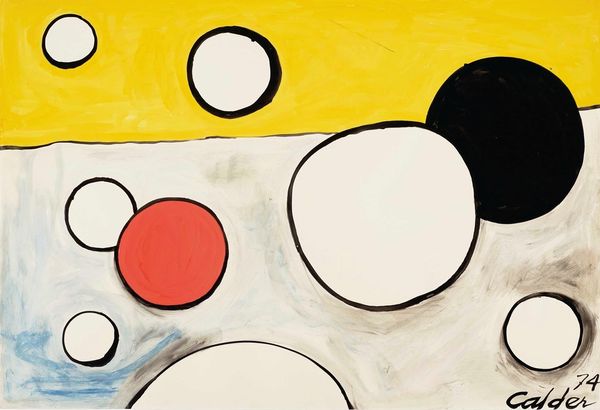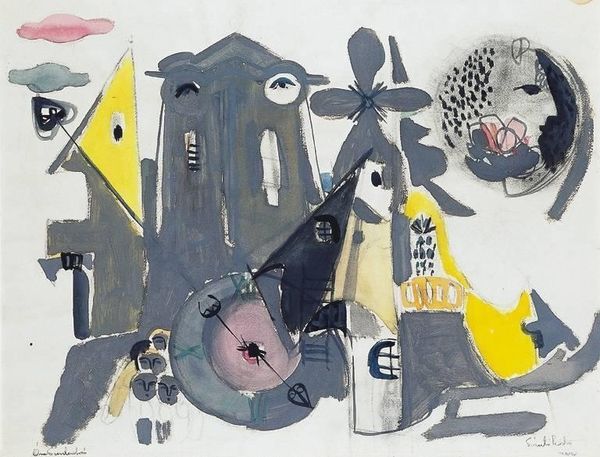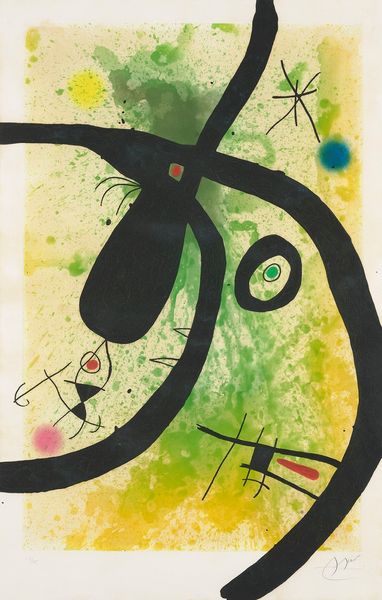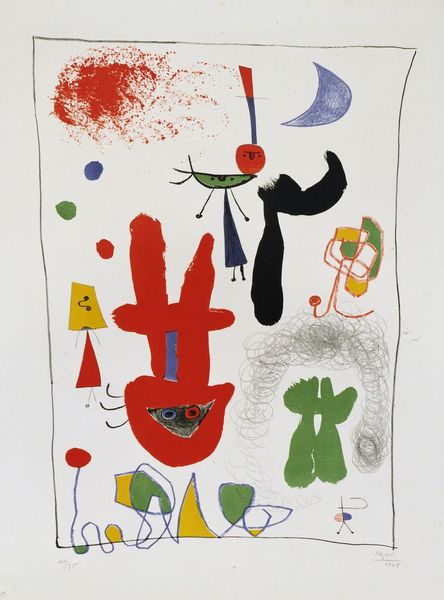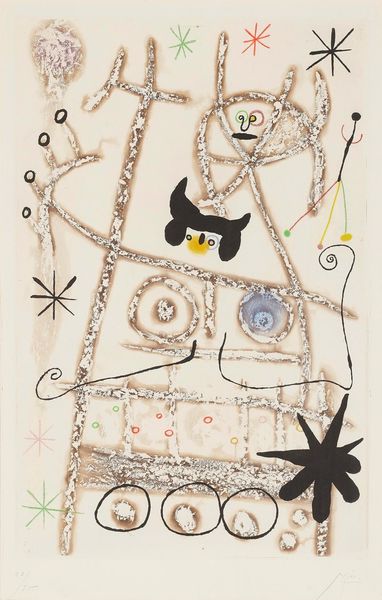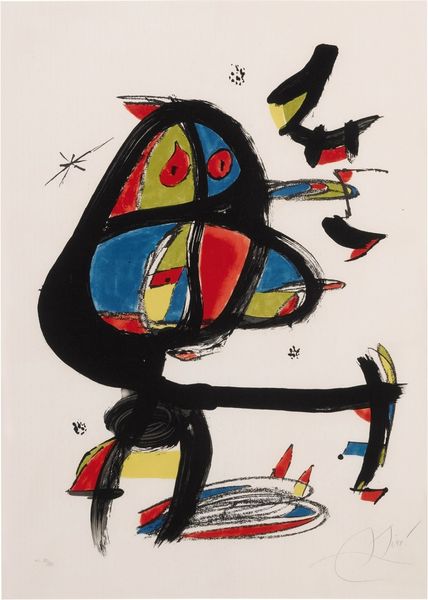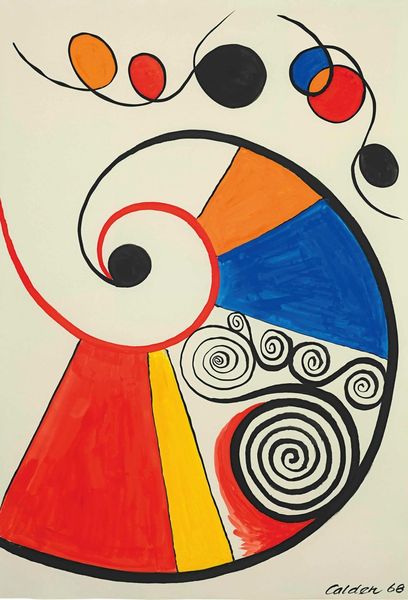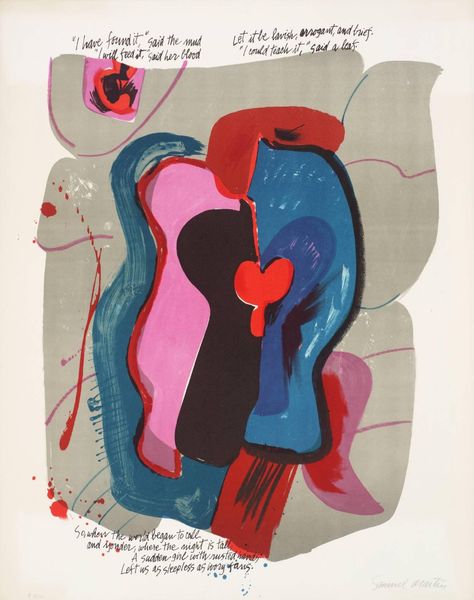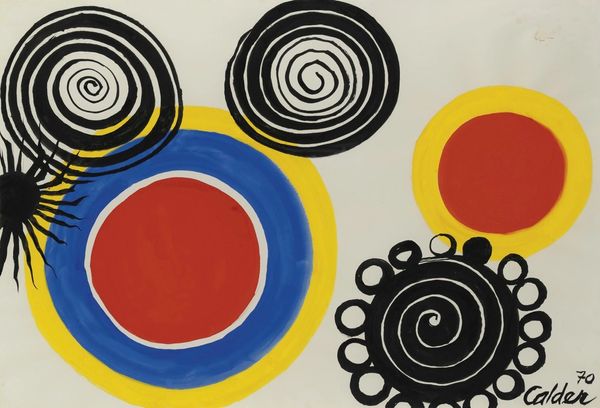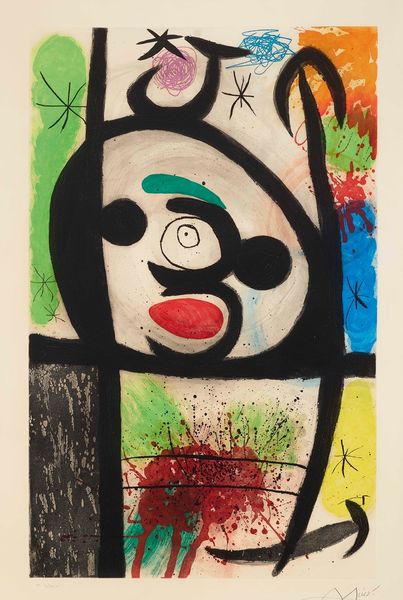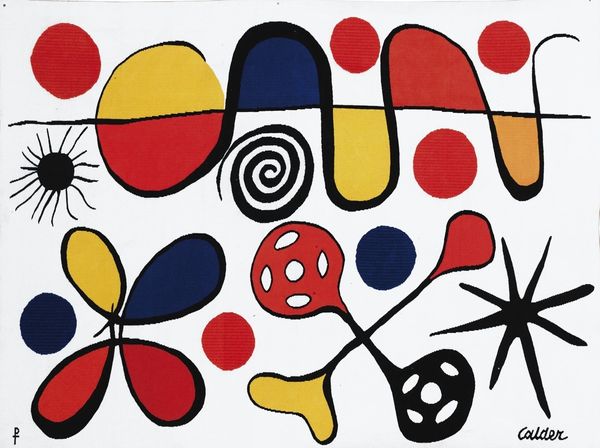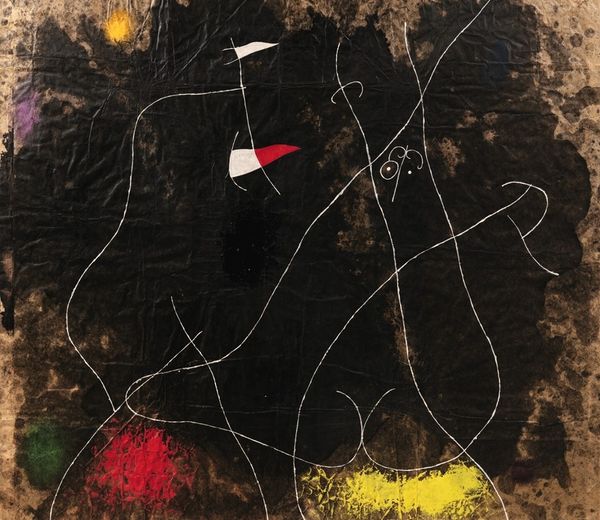
#
neo-pop
Copyright: Modern Artists: Artvee
Curator: Here we have Takashi Murakami’s "DOB in Pure White Robe," an acrylic on canvas work from 2013. I'm struck by how Murakami marries high-gloss surfaces with a kind of distressed, almost industrial backdrop. Editor: It's interesting how childlike and almost saccharine the central character is in contrast to the harsh, silvery background. It evokes a sense of unease, almost as if innocence is being threatened. Curator: Absolutely, and that tension is vital to understanding Murakami’s practice. The surface of the canvas, you see, is almost a commodity fetish; meticulously manufactured, embodying Japan's postwar economic boom and consumer culture, and all that labor embedded. Editor: Yet, the character DOB seems to have roots in much older traditions of Japanese art and culture. The large eyes are reminiscent of anime characters, which in turn, owe something to Buddhist imagery – they signify an open, all-seeing awareness. Curator: The material properties definitely emphasize that relationship, because he’s literally building on the foundations of a kind of industrial paint base. Also, the title implies an innocent purity countered by the slick manufacturing, so the reading is much more multi-layered. Editor: Precisely! And DOB himself is a complex symbol, isn’t he? Part Mickey Mouse, part anime creature, he represents Murakami’s concept of the "superflat," a flattening of historical depth, social commentary, and even emotional range. It's all there in the imagery. Curator: Right. In production terms, his method incorporates a factory-like studio system with many hands at work. In many ways, he critiques, or mirrors our current economy with the consumption and output on a massive scale, by calling back to art historical approaches, almost making an art historical artifact in real time. Editor: Seeing DOB in "Pure White Robe", you can’t help but wonder about the complexities of contemporary culture and the artist's reflection. Curator: Indeed, there are processes that question what is really hand-made versus mass-produced, which seems relevant today.
Comments
No comments
Be the first to comment and join the conversation on the ultimate creative platform.

